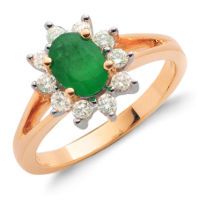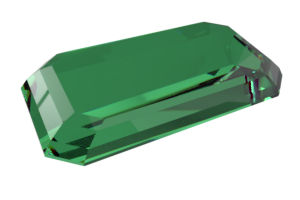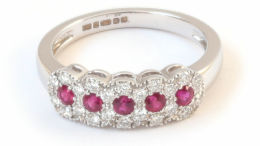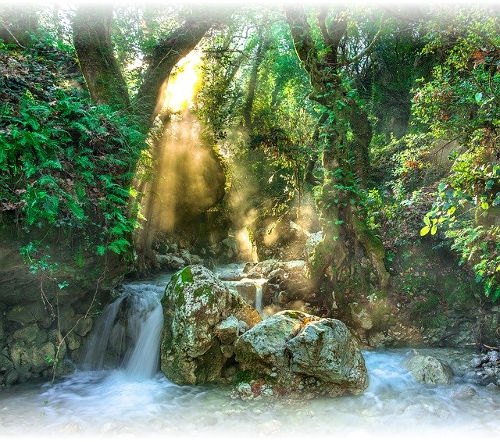The emerald is one of the 6 precious gemstones. Well known for its green tone, it is often chosen for finer jewellery in which colour is important. It is a rare, durable, and vibrant stone which makes it a great choice if one is willing to pay the associated prices.
Characteristics

Emeralds generally have a glass-like lustre and do not appear opaque – they always let a certain portion of light through. Thus it can be said they tend to be transparent or at the very least translucent.
When searching for a suitable Emerald, it is best to remain careful since there are many fake stones on the markets. It is advised to buy from reputable sellers who will offer genuine Emeralds as opposed to fake stones prepared to resemble Emeralds or synthetic Emerald stones. Fortunately, experts are usually able to tell apart genuine gemstones from fake or synthetic ones.
At times, Emeralds may be treated to disguise their flaws – if gemstone purity is a concern, it is best to ask the dealer to find out whether and what treatments have been applied to the stone. If a stone has been treated to mask their flaws, soap should be avoided when cleaning these emeralds as this may end up exposing their flaws. The same is true for ultrasonic jewellery cleaning.
It is very common for an Emerald's flaws to be concealed – while it is good to be informed on Emerald purchases, finding a high quality unaltered Emerald can prove difficult.

Colour
These precious gemstones only appear in Green. However, lighter and deeper varieties of the colour can be encountered. In general, emeralds of lighter tone are considered to be lesser in value. Deeper tones of green tend to be priced higher, as well as stones with fewer flaws. Interestingly, while flawless emeralds are generally sought after, sometimes gemstones with minor flaws may be seen as more desirable due to the flaws acting as proof of authenticity.
While there are no varieties of Emeralds that exhibit different tones, Trapiche Emeralds exhibit a hexagonal pattern of rays emerging at the center of the stone. These examples tend to be cut into cabochon shapes, and are found exclusively in Colombia.
Other noteworthy varieties of this stone can be found in Zambia: they tend to exhibit a high degree of transparency and an appealing colour tone.
The Cat's Eye effect can be encountered on Emerald gemstones, but it is very rare – limited to lighter tone gems and a rarity even among them.
Use
Emeralds can be used in a variety of ways. The stone can appear in most types of jewellery such as earrings, necklaces, bracelets, pendants, rings, among other uses. Faceted cuts are the common way to shape a transparent emerald, while translucent stones are usually shaped into cabochons and beads. The popular Emerald Cut was brought about to reduce the pressure applied to Emeralds during the cutting process, reducing the risk of damage.
Sources
Most prominent deposits include those located in Colombia and Zambia. Other significant sources include China, Russia, Afghanistan, the state of North Carolina in the United States and Mozambique.









